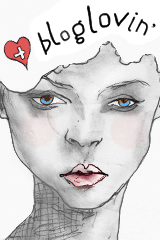My students have been begging for a science experiment and last week they finally got to participate in one...making gloop (aka oobleck)! For those of you that aren't familiar, it's basically a strange slime that is not really a liquid, but not really a solid either. It is a non-Newtonian fluid; it has properties of both liquids and solids. We ended our unit on mixtures and solutions, so I thought this would be a fun experiment for them and boy was it a hit! It can get a little messy, but I swear clean up is super easy. You may want to put down butcher paper/newspaper to avoid spills on the desk. I didn't have that available. A trick to clean up is to quickly flick the goo and it will turn into a solid and be easy to clean from the desk surface.


Before the experiment we discussed the different steps of the scientific method and how it related to what we would be investigating. They took out their science journals and made a hypothesis based on what we would be mixing together. Normally, I would have them record their observations and data as the experiment progress, but since this was messy, I had them do that at the end.


You will need:
- 1 cup of cornstarch
- 1/2 cup of water
- a mixing bowl
- food coloring
Steps:
- Pour a cup of cornstarch into a mixing bowl. Have the students feel the cornstarch, it doesn't feel like any other powder. Journal question: How does the cornstarch feel?
- Add two drops of food coloring to the water. You don't need much!
- Add/Mix the water slowly into the flour, using your fingers. Dig in with your hands and really mix it up. Journal question: How does the mixture feel?
- Try squeezing a handful of the liquid you've made into a ball. It will become a solid!
- Let the goop settle into the bottom of the bowl. Touch the surface gently, then tap it hard. Journal question: What happens when you touch the surface gently? Hard? Why do you suppose this happens?
- If you hold your hand still, it will become liquid and run through your fingers. Try it!
***Sometimes you may need to add more cornstarch/water to get it to the right consistency where it reaches a state that is the liquid and yet solid.
How Does It Work?
When the mixture is put under pressure, the cornstarch molecules are forced together, and it behaves like a solid. When it is handled gently, the cornstarch molecules can move around freely, and it flows like a liquid.
***Not the best photos, forgot to bring my camera to work and had to use my Driod.









My 5th graders love science experiments, too! We made moon craters this week and determined what sized objects left wider craters. We are heading into the Matter unit.. I will have to remember to make this! Thanks for reminding me!
ReplyDeleteSusan
LopezLandLearners